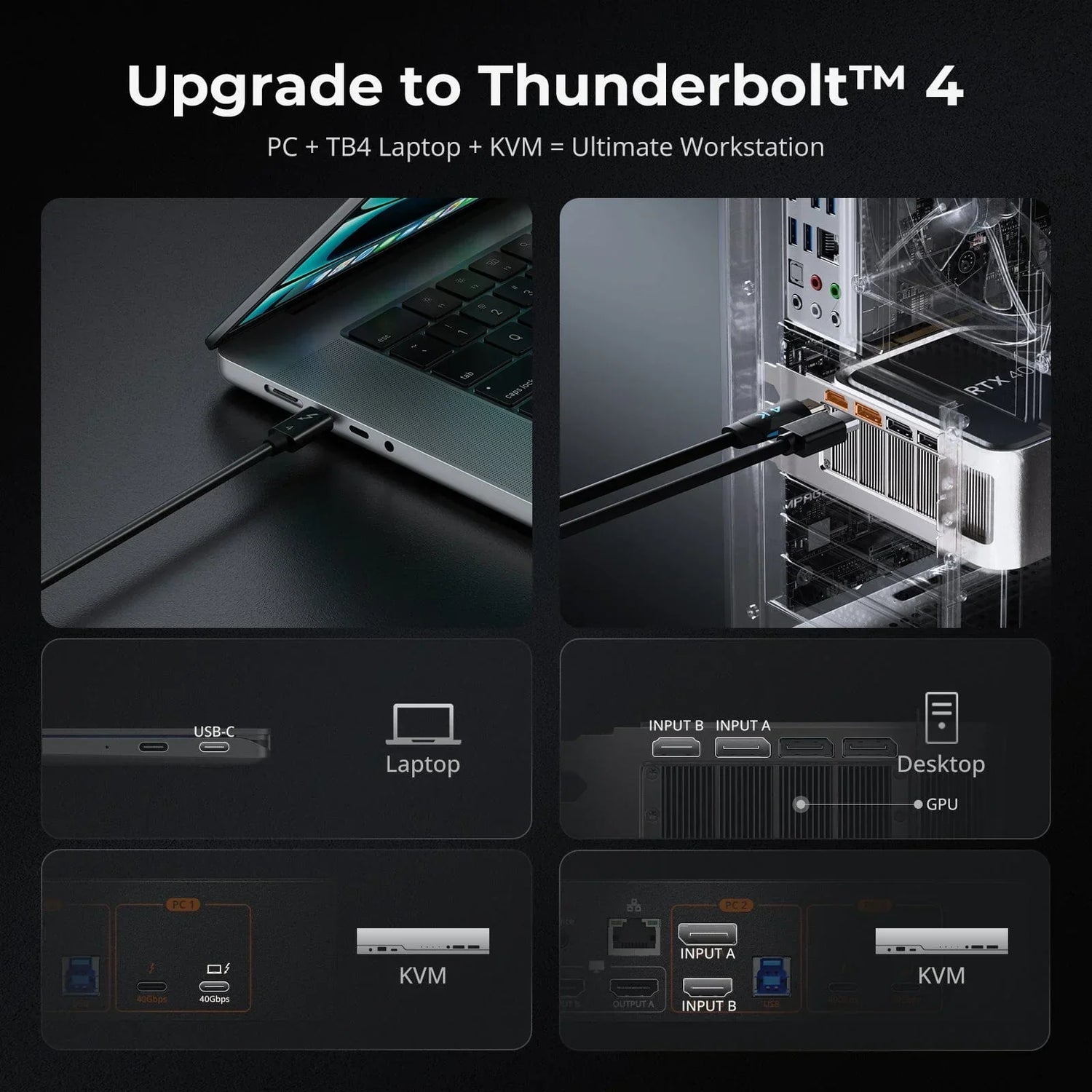In the realms of digital entertainment and work, high-resolution and high-refresh-rate images and videos are gradually becoming the standard. However, to achieve these enhanced visual experiences, the demand for transmission bandwidth is also increasing. To overcome this challenge, Display Stream Compression (DSC) technology has emerged. This article delves into DSC technology, revealing its working principles, application scope, and significance in the fields of graphics cards, gaming consoles, and KVM switches.
The Core of DSC Technology: Efficient Data Compression
-
Overview of DSC: Display Stream Compression, abbreviated as DSC, is a data compression technology developed by VESA (Video Electronics Standards Association). Its core objective is to identify redundancies and patterns in image data and compress them efficiently to reduce the required transmission bandwidth. The allure of DSC lies in its ability to achieve higher image transmission efficiency while maintaining visual quality.
-
Application Scope: DSC technology is applied in various video transmission standards, such as DisplayPort 1.4 and HDMI 2.1. This makes DSC a powerful tool for handling high-resolution and high-refresh-rate images. Imagine ultra-high-definition images like 8K@120Hz and 10K@120Hz, which require massive amounts of data. DSC can achieve smooth transmission with reduced bandwidth through data compression.
"Display Stream Compression (DSC) is the secret ingredient in achieving high-quality image transmission without overwhelming bandwidth demands. Developed by VESA, DSC's data compression techniques optimize image data for smoother transmission. From enhancing graphics card capabilities to powering KVM switches' efficiency, DSC's impact on the world of visual technology is undeniable." — from <Guru3D>
Applications and Limitations of DSC: Graphics Cards and Gaming Consoles
-
Graphics Cards and DSC: For PC gamers with high-performance graphics cards, the application of DSC technology is relatively straightforward. However, to ensure DSC works, users need to ensure both their graphics card and display support the technology. Fortunately, once the graphics card detects a DSC-supported display, the feature is automatically enabled. However, some graphics card manufacturers may not explicitly label their models with DSC support, requiring users to conduct deeper research before purchasing.
-
Gaming Consoles and DSC: Console gaming enthusiasts using devices like PS5, Xbox, and Nintendo Switch face more challenges in terms of DSC technology support. The article points out that PS5 does not support DSC technology. As for the Xbox Series X, while not explicitly claiming DSC support, it still possesses capabilities to support high resolution and refresh rates, providing gamers with a superior gaming experience.
-
DSC-Supported KVM Switches: In connection setups, the performance of KVM switches directly impacts image quality. Fortunately, with technological advancements, more and more KVM switches are beginning to support DSC technology. This KVM switch excels in connecting multiple devices, efficient switching, and maintaining excellent image quality.
Deep Connection Between KVM Switches and DSC Technology
KVM switches (Keyboard, Video, and Mouse switches) are indispensable tools in modern work environments, allowing users to control multiple computers or devices simultaneously without switching keyboards, mice, and monitors. However, KVM switches are not just solutions for connecting multiple computers; they also tightly integrate advanced technologies like Display Stream Compression (DSC) to provide a more efficient work environment.
Generally, KVM switches aim to provide a seamless device-switching experience. However, with the increase in image transmission demands, traditional KVM switches may face challenges like high-resolution and high-refresh-rate image transmission. This is why KVM switches supporting DSC technology have become particularly crucial. The advent of DSC technology enables KVM switches to maintain high-quality images while reducing the required transmission bandwidth through data compression. This combination provides users with smoother switching experiences, whether in high-resolution design tasks or multitasking scenarios.
For instance, consider a video editing professional who needs to handle high-resolution videos across multiple devices simultaneously. Traditional KVM switches may encounter bandwidth limitations, leading to degraded image quality or even screen tearing. However, KVM switches supporting DSC technology can address these challenges, optimizing transmission through data compression to ensure high-definition quality while maintaining smooth device switching.
In conclusion, the fusion of KVM switches and DSC technology provides users with a more efficient and superior work environment. Together, they tackle issues related to insufficient transmission bandwidth and image quality, making switching operations across multiple devices easy and seamless. Whether in professional fields or personal use, DSC-supported KVM switches become valuable assistants in enhancing work efficiency and visual experiences.
Conclusion
Display Stream Compression (DSC) technology plays a significant role in today's high-definition and efficient transmission. Through efficient data compression, it enables high-resolution and high-refresh-rate image transmission. From graphics cards to gaming consoles, and even KVM switches, the application scope of DSC is wide and continuously expanding. It not only drives the development of image transmission but also delivers superior visual experiences for users.




